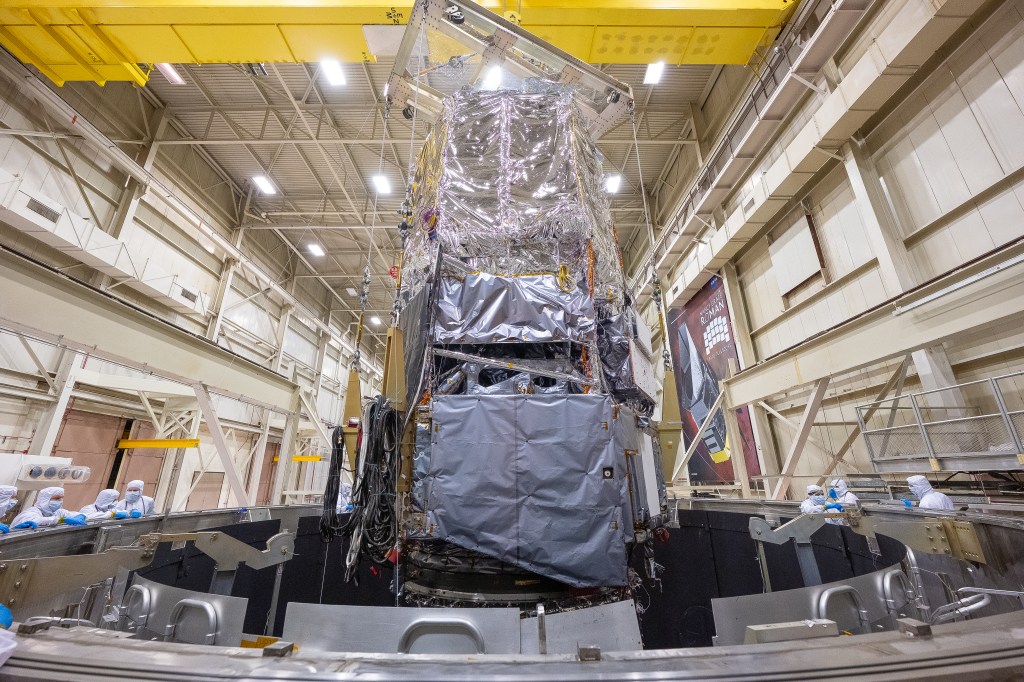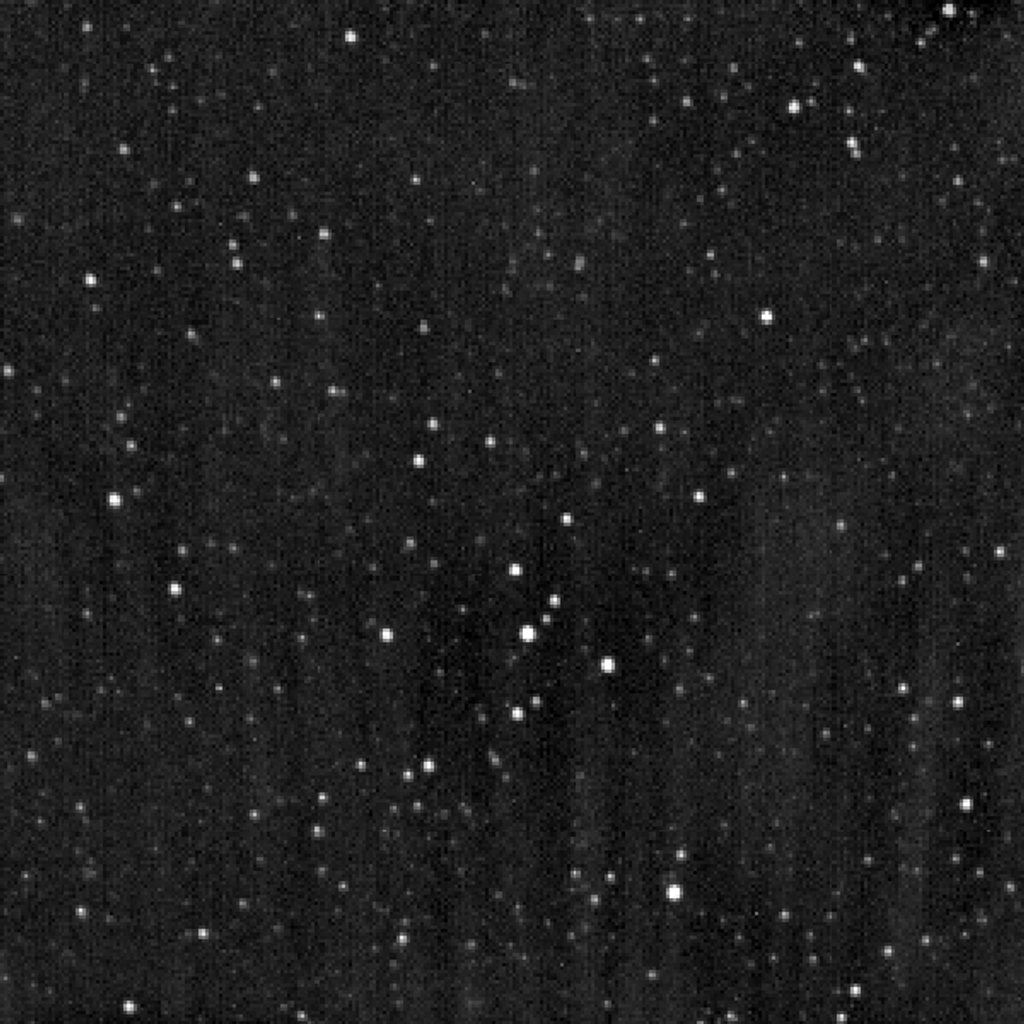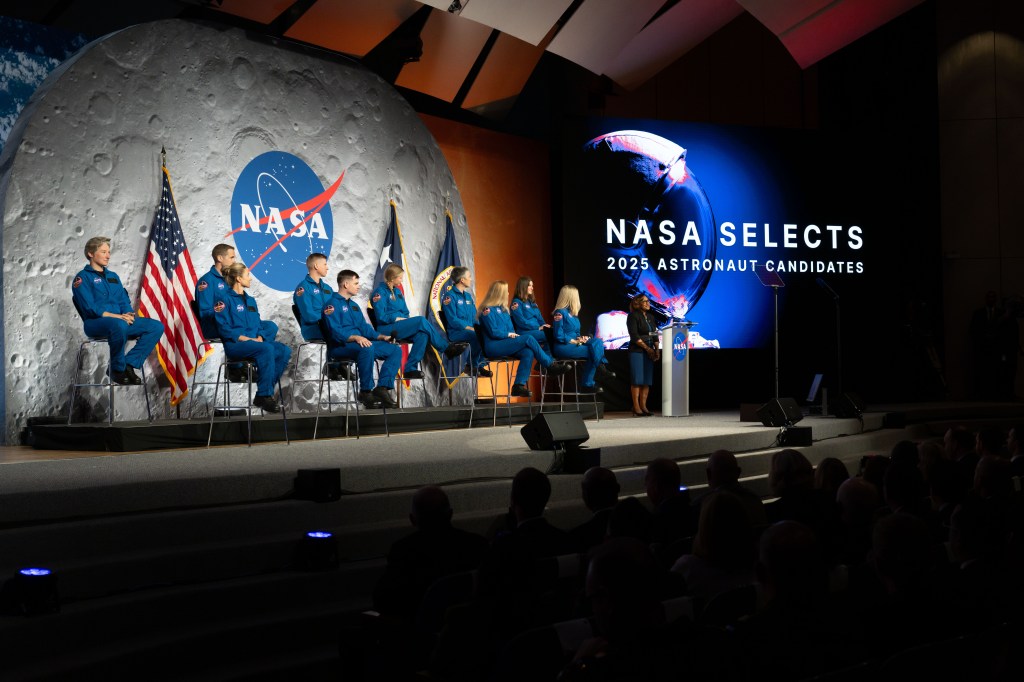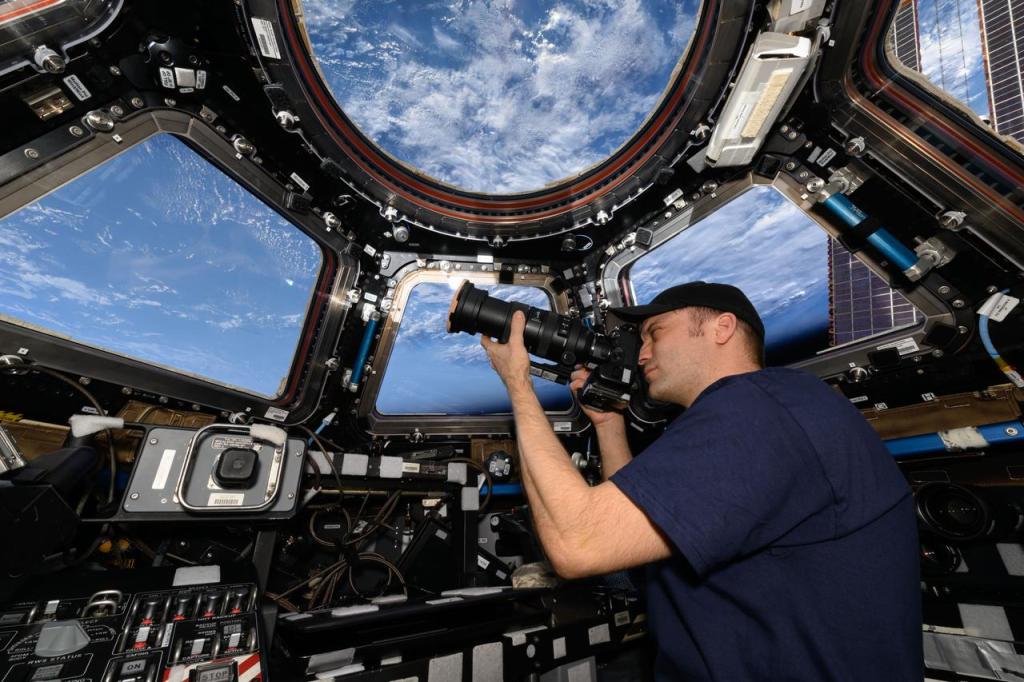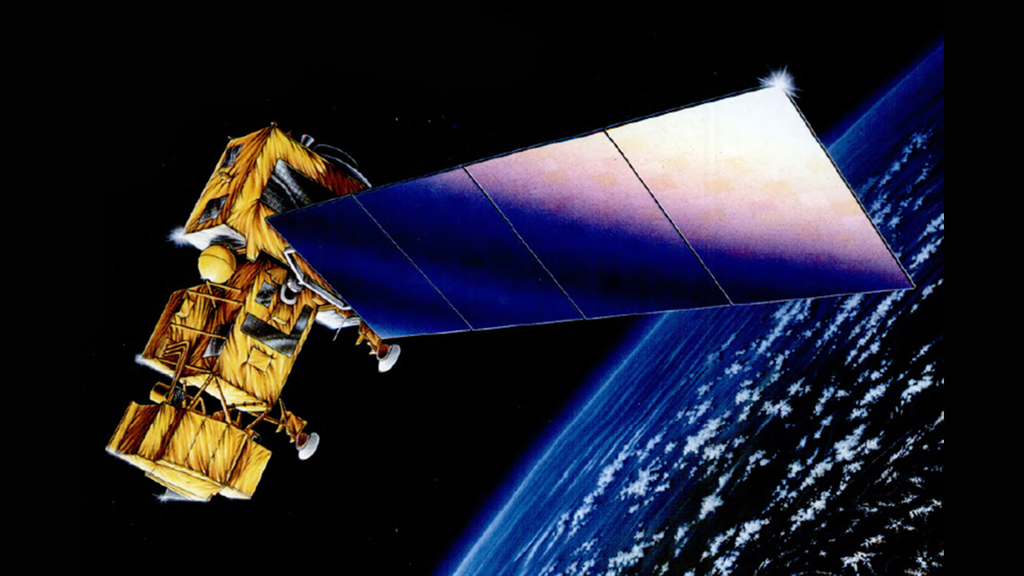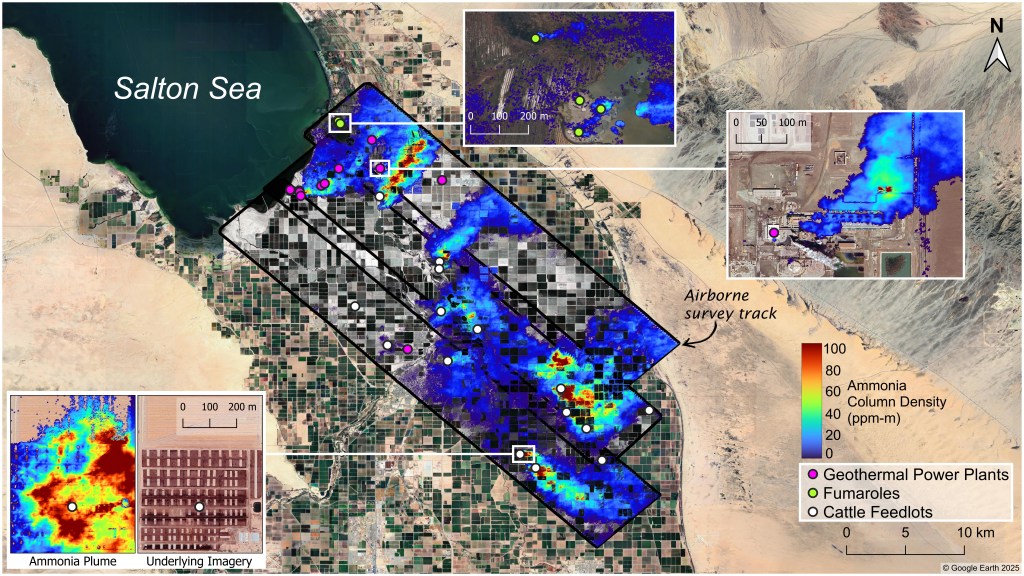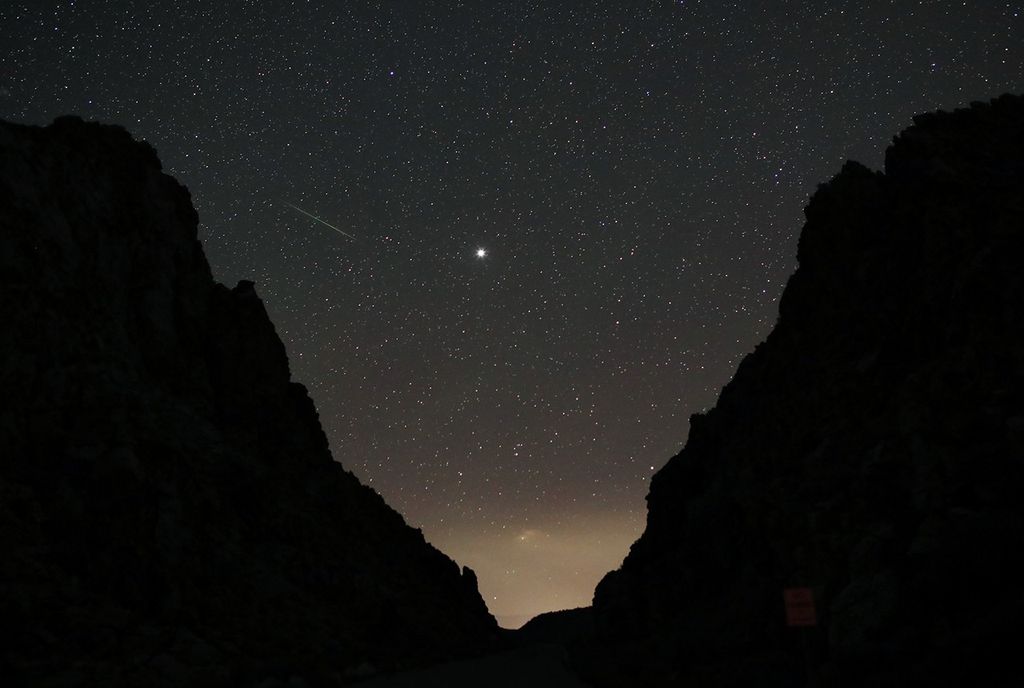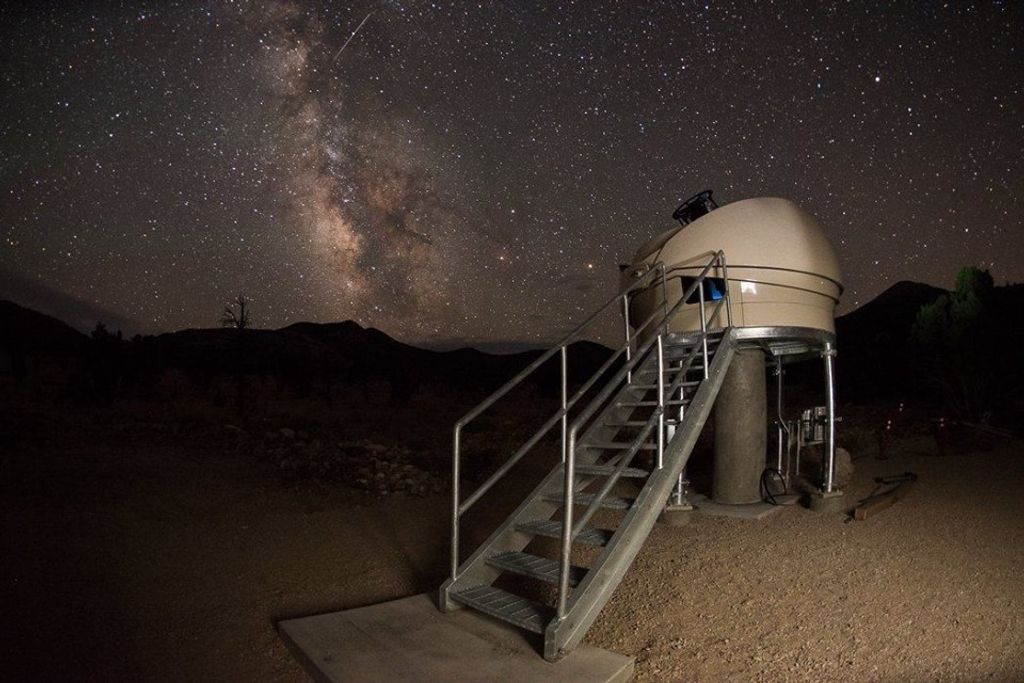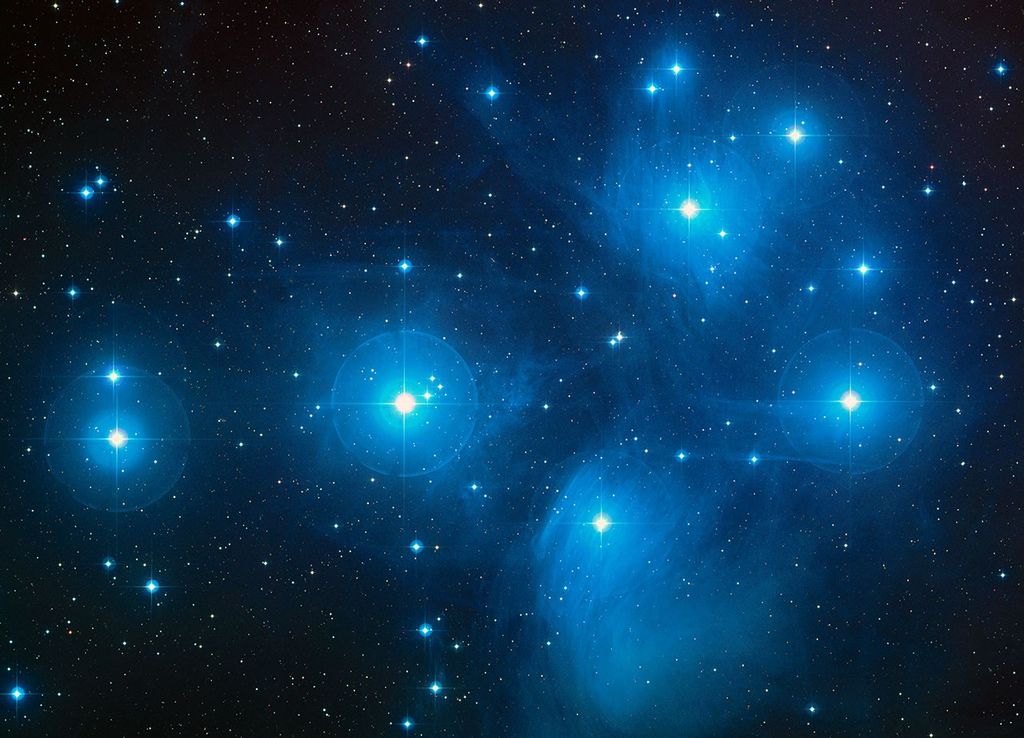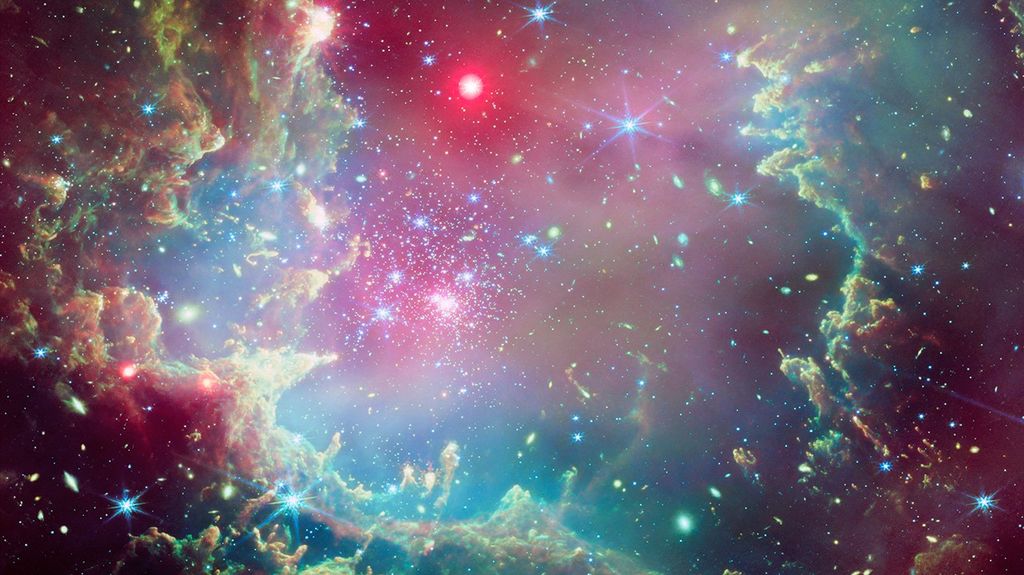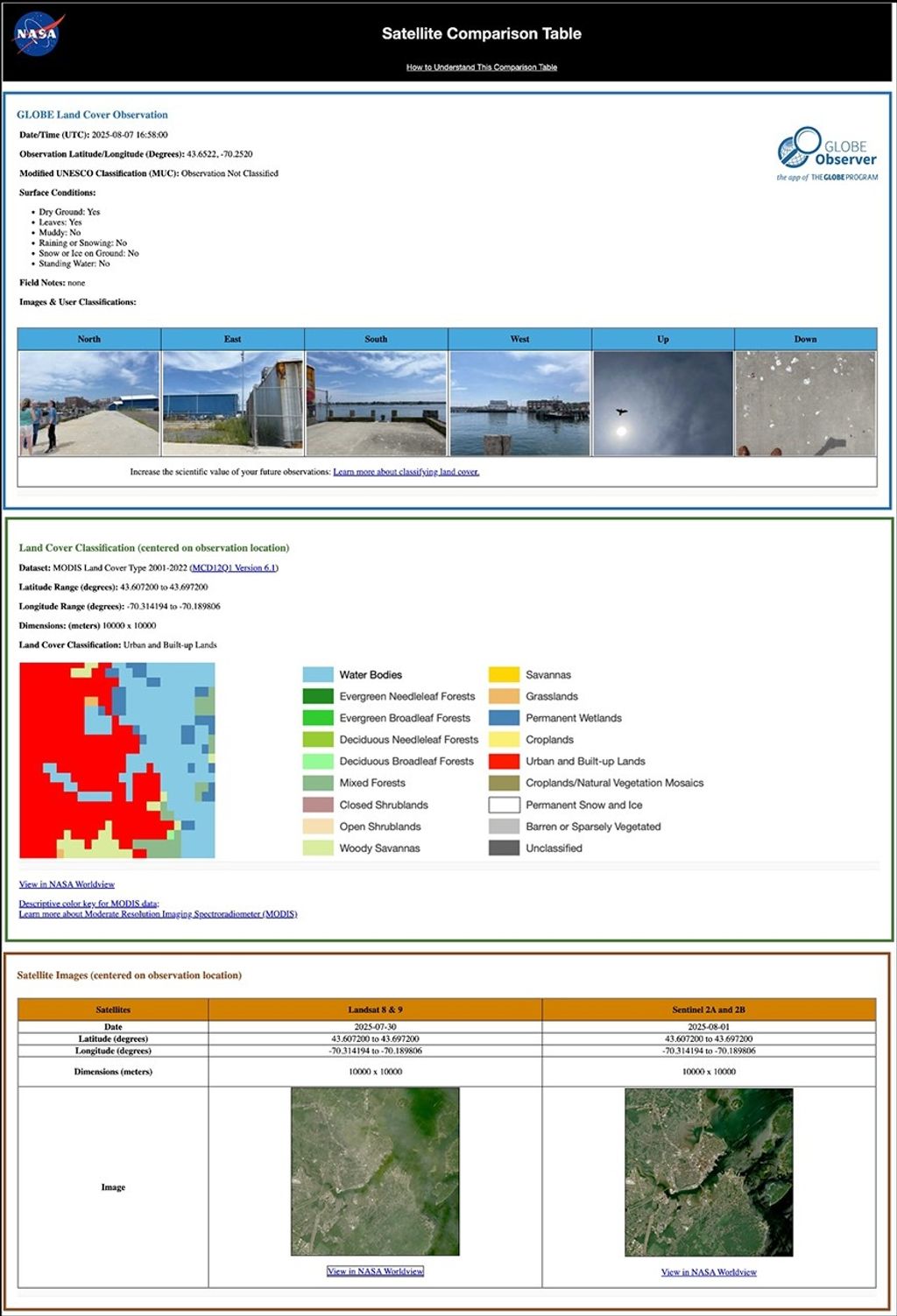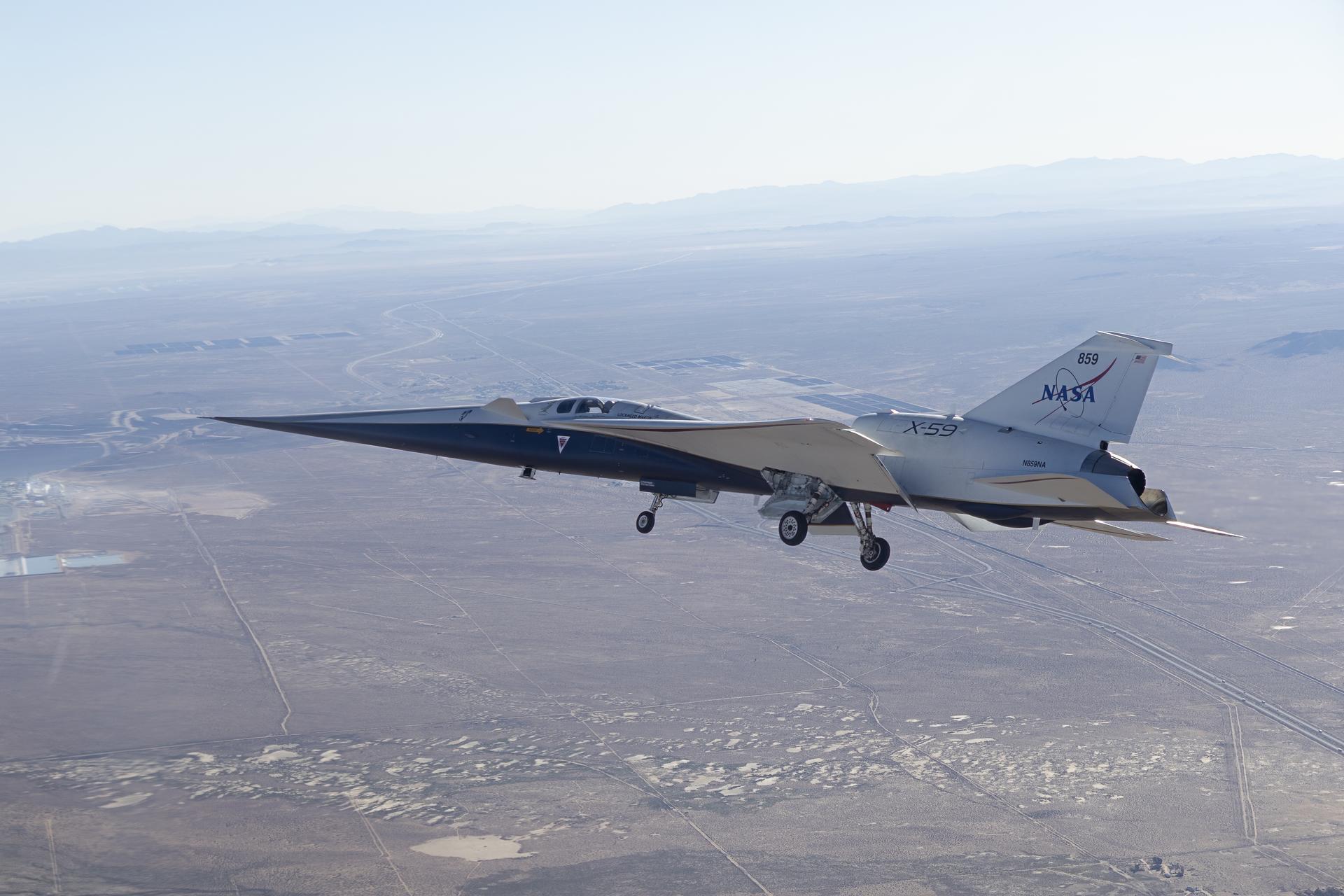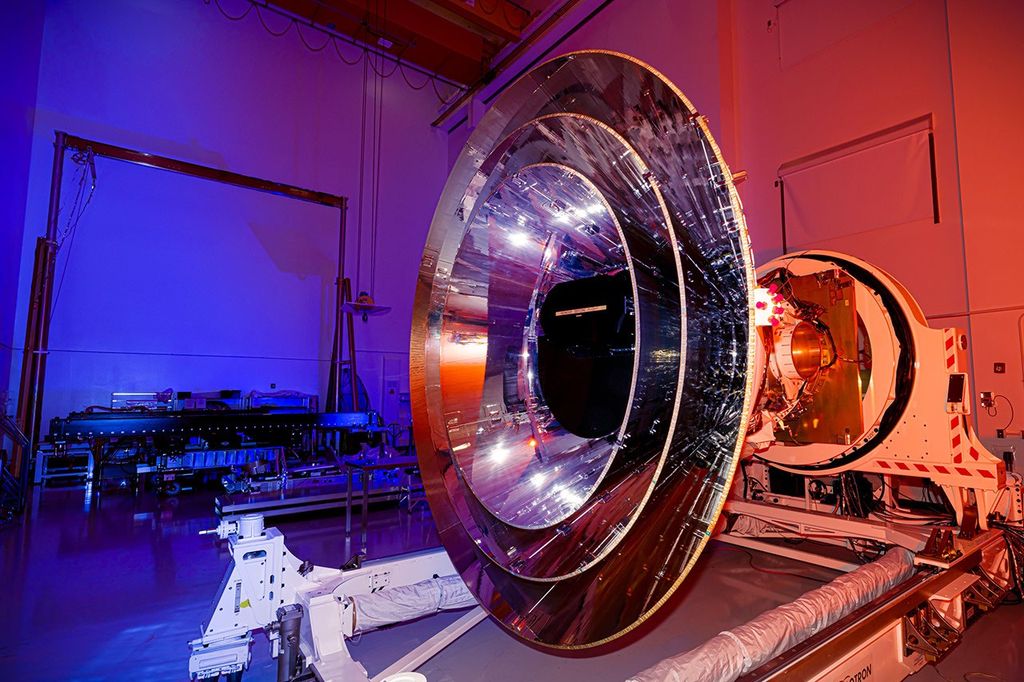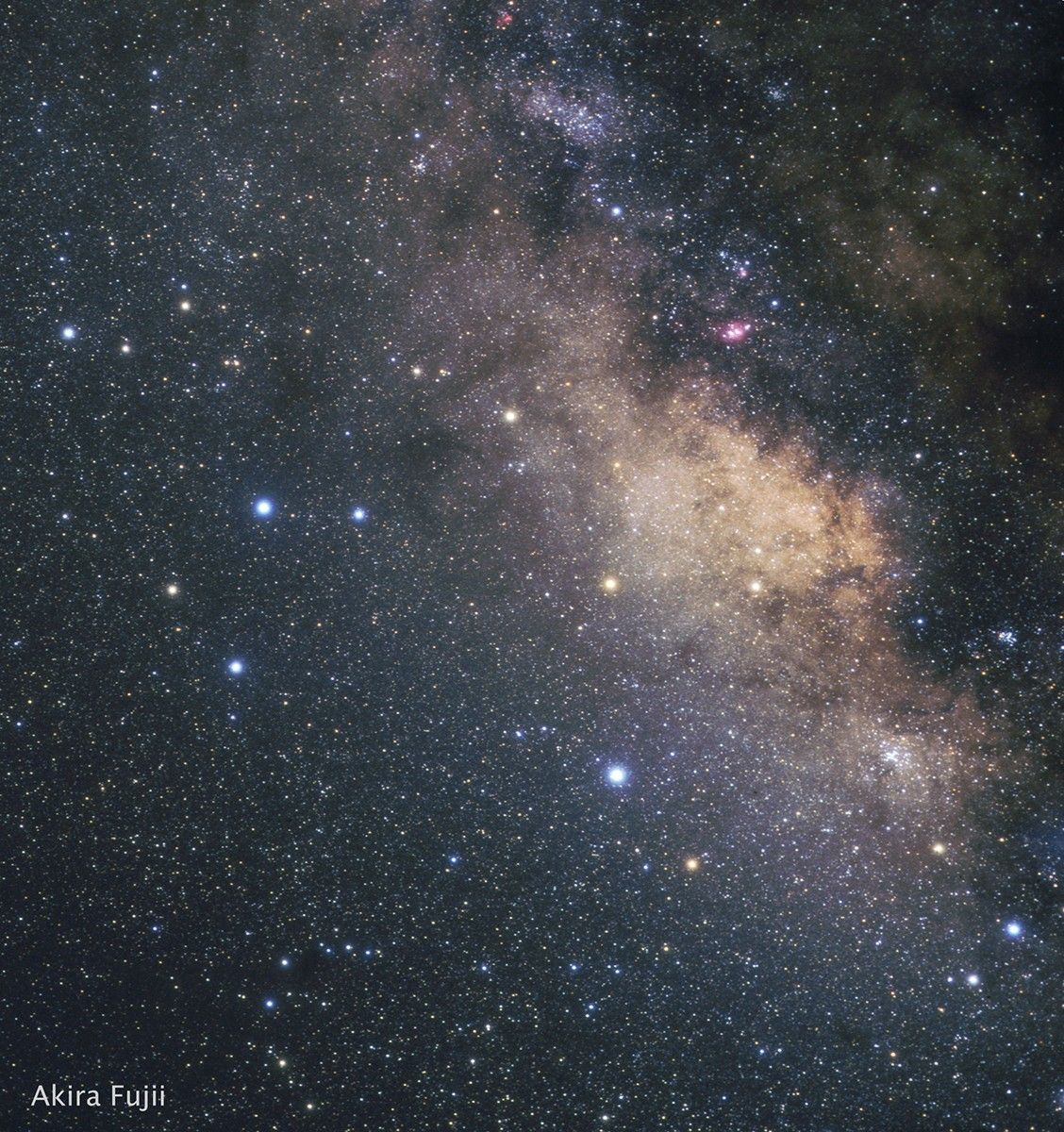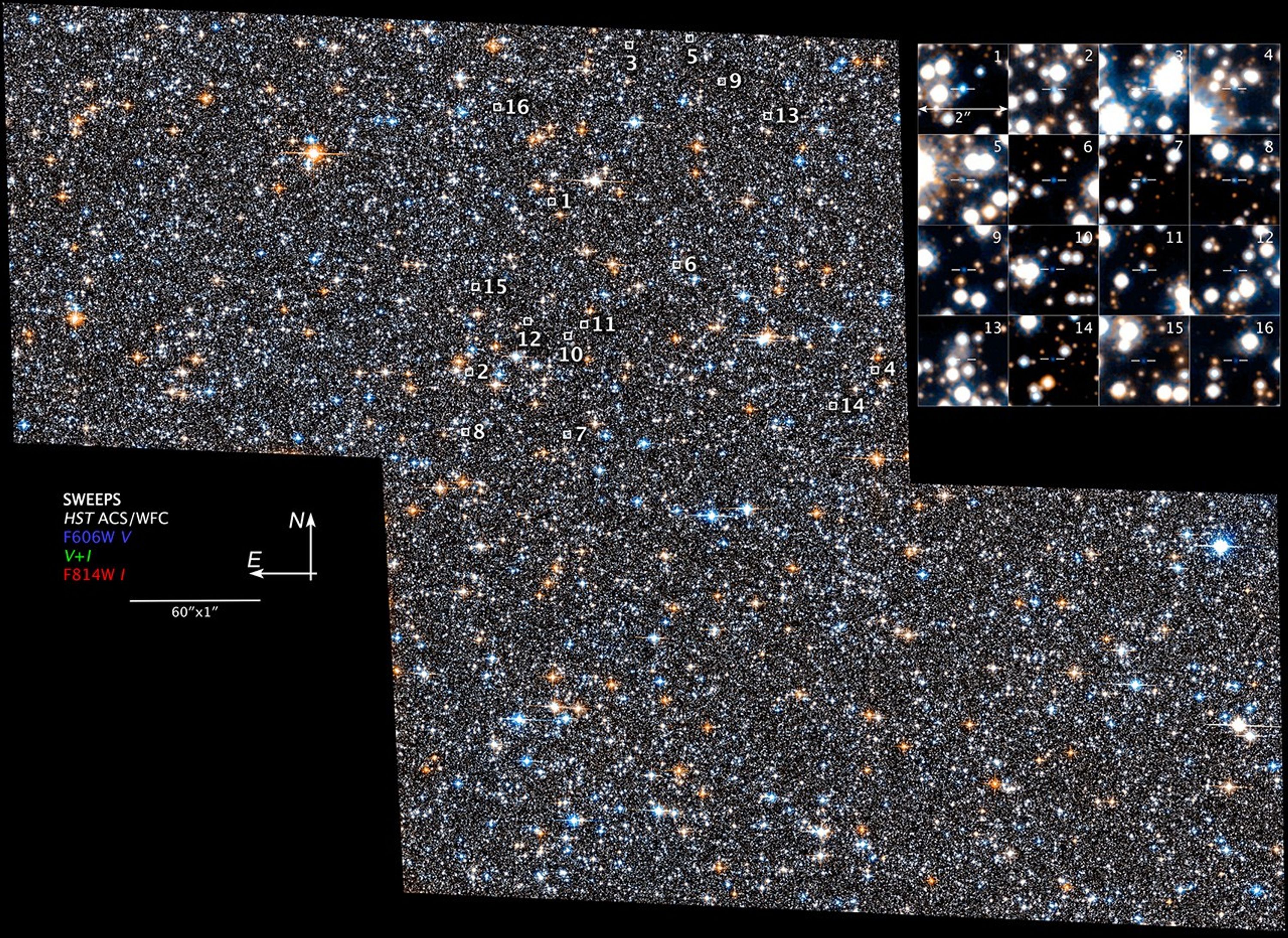1 min read
Survey of White Dwarf Stars in the Milky Way Bulge
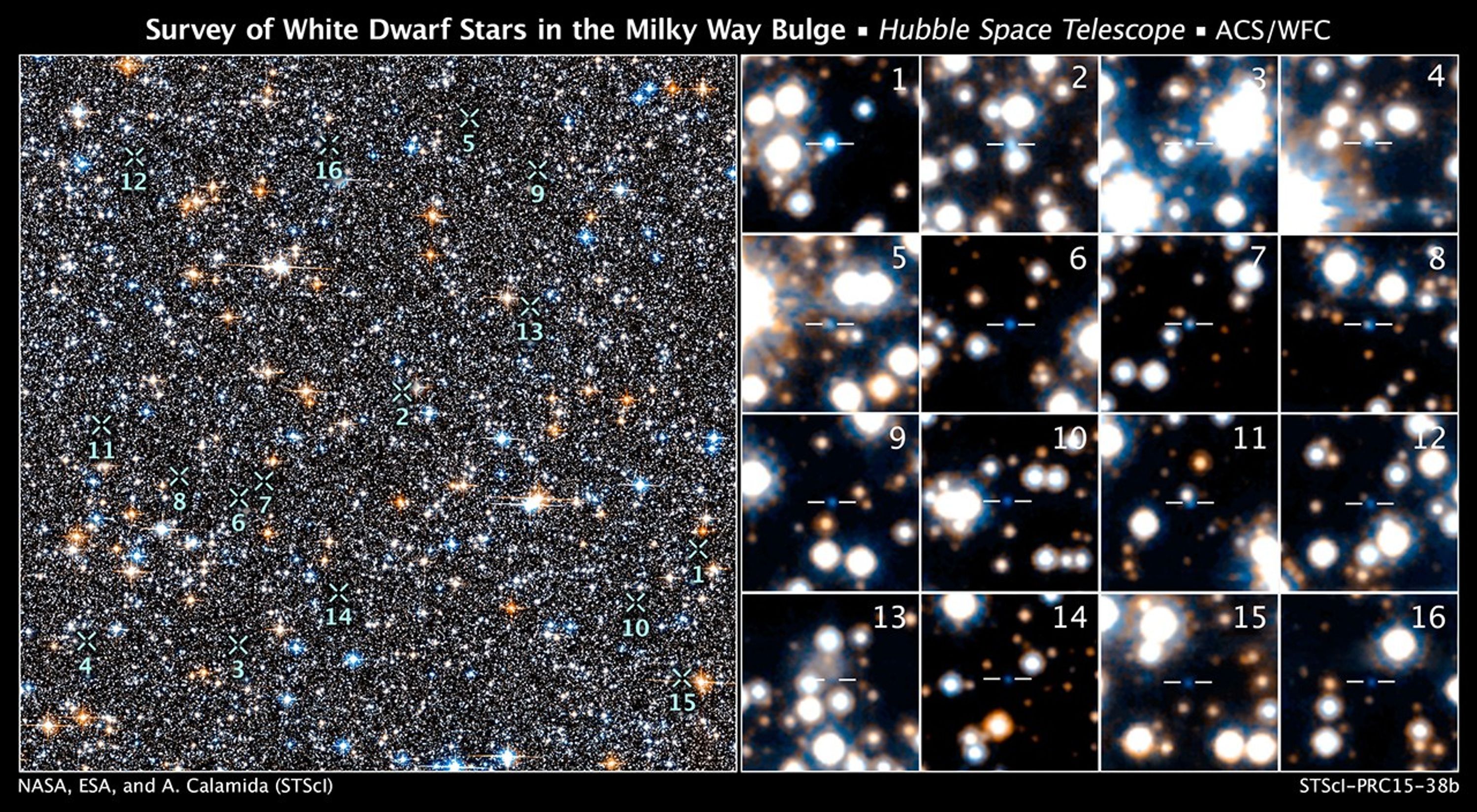
NASA's Hubble Space Telescope has detected for the first time a population of white dwarfs embedded in the hub of our Milky Way galaxy. The Hubble images are the deepest, most detailed study of the galaxy's central bulge of stars. The smoldering remnants of once-vibrant stars can yield clues to our galaxy's early construction stages that happened long before Earth and our sun formed.
[Left] – This is a small section of Hubble's view of the dense collection of stars crammed together in the galactic bulge. The region surveyed is part of the Sagittarius Window Eclipsing Extrasolar Planet Search (SWEEPS) field and is located 26,000 light-years away.
[Right] – Hubble uncovered extremely faint and hot white dwarfs. This is a sample of 16 out of the 70 brightest white dwarfs spied by Hubble in the Milky Way's bulge. Astronomers picked them out based on their faintness, blue-white color, and motion relative to our sun. The numbers in the inset images correspond to the white dwarfs' location in the larger Hubble view.
Hubble's Advanced Camera for Surveys made the observations in 2004 and 2011-2013.
About the Object
- R.A. PositionR.A. PositionRight ascension – analogous to longitude – is one component of an object's position.17h 59m 1.88s
- Dec. PositionDec. PositionDeclination – analogous to latitude – is one component of an object's position.-29° 13' 40.69"
- ConstellationConstellationOne of 88 recognized regions of the celestial sphere in which the object appears.Sagittarius
About the Data
- Data DescriptionData DescriptionProposal: A description of the observations, their scientific justification, and the links to the data available in the science archive.
Science Team: The astronomers who planned the observations and analyzed the data. "PI" refers to the Principal Investigator.Hubble data for this release were obtained from the following HST proposals: 9750: PI: K. Sahu (STScI), R. Gilliland (Pennsylvania State University), H. Bond (STScI/Pennsylvania State University), T. Brown (University of Colorado), S. Casertano and M. Livio (STScI), D. Minniti (Pontificia Universidad Católica de Chile), N. Panagia (STScI), A. Renzini (Osservatorio Astronomico di Padova, Italy), R. Rich (UCLA), and M. Zoccali (Pontificia Universidad Católica de Chile); and proposal; 12586: PI: K. Sahu (STScI), H. Bond (STScI/Pennsylvania State University), T. Brown, H. Ferguson, J. Anderson, and S. Casertano (STScI), M. Dominik (University of St. Andrews), A. Udalski (Warsaw University), M. Livio (STScI), Y. Perrott (University of Cambridge), M. Albrow (University of Canterbury), P. Yock (University of Auckland), C. Fryer (Los Alamos National Laboratory), S. Mao (Manchester University), and I. Bond (Massey University). The international team of astronomers in this study includes: A. Calamida, K. Sahu, S. Casertano, and J. Anderson (STScI), S. Cassisi (INAF - Osservatorio Astronomico di Teramo, Italy), M. Gennaro, M. Cignoni, T. Brown, N. Kains, H. Ferguson, and M. Livio (STScI), H. Bond (STScI/Pennsylvania State University), R. Buonanno (INAF - Osservatorio Astronomico di Teramo, Italy, and Università di Roma Tor Vergata, Roma, Italy), W. Clarkson (University of Michigan, Dearborn), I. Ferraro (INAF - Osservatorio Astronomico di Teramo, Italy), A. Pietrinferni (INAF - Osservatorio Astronomico di Roma, Italy), M. Salaris (Astrophysics Research Institute/Liverpool John Moores University), and J. Valenti and J. Sokol (STScI). - InstrumentInstrumentThe science instrument used to produce the data.HST>ACS/WFC
- FiltersFiltersThe camera filters that were used in the science observations.F606W (V) and F814W (I)
- Object NameObject NameA name or catalog number that astronomers use to identify an astronomical object.SWEEPS Field
- Object DescriptionObject DescriptionThe type of astronomical object.Stellar Survey Field Near the Galactic Bulge
- Release DateNovember 5, 2015
- Science ReleaseHubble Uncovers Fading Cinders of Some of Our Galaxy’s Earliest Homesteaders
- Credit
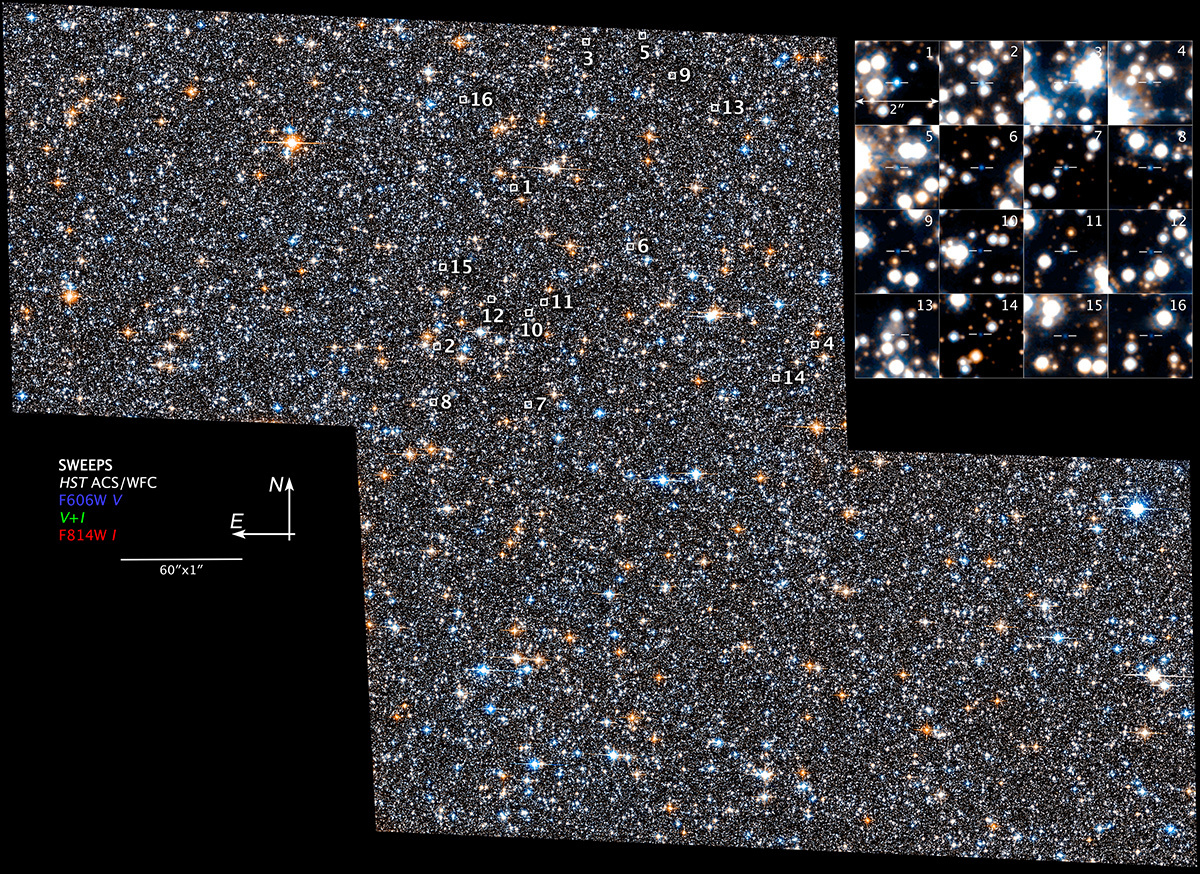
Related Images & Videos
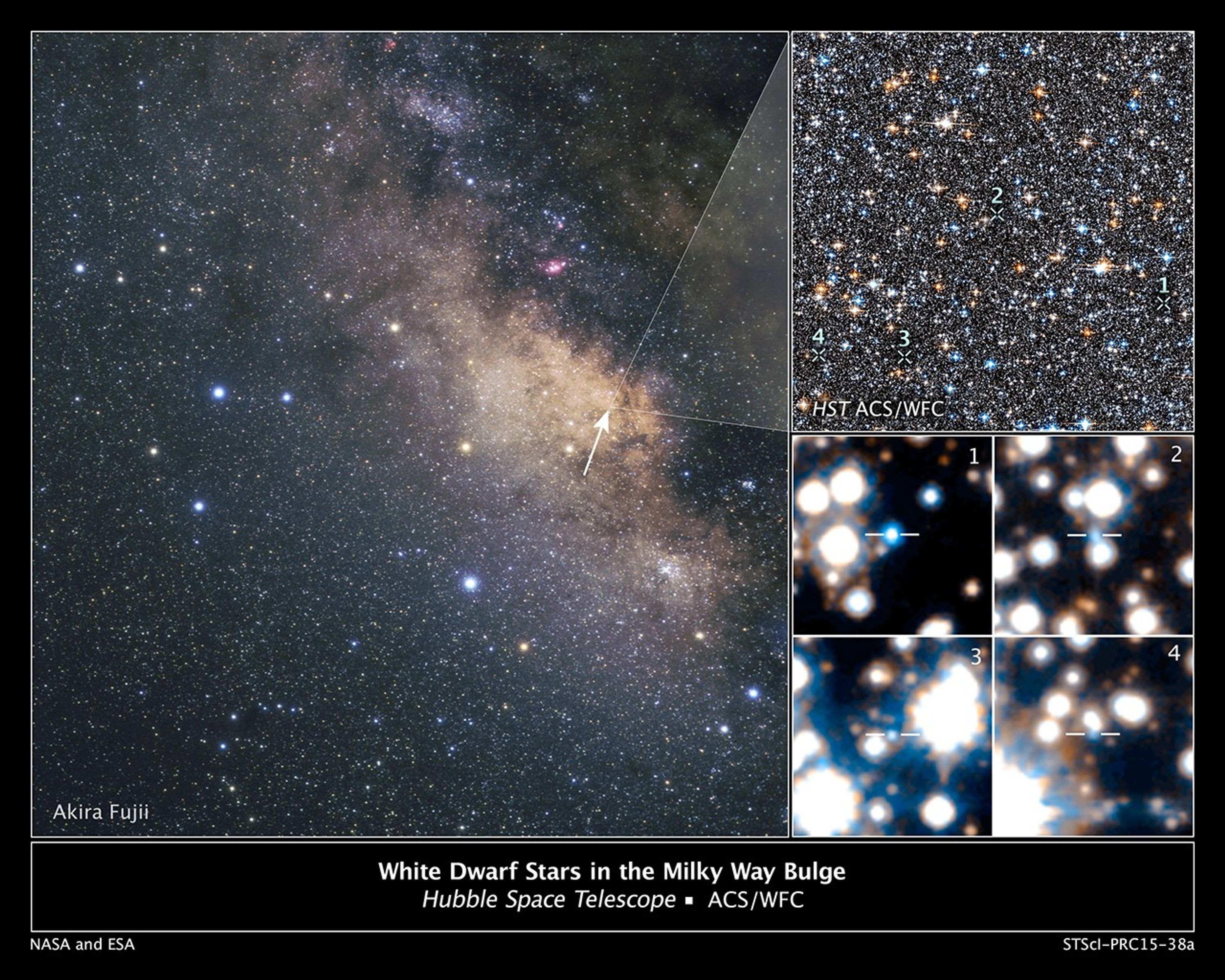
White Dwarf Stars in the Milky Way Bulge
NASA's Hubble Space Telescope has detected for the first time a population of white dwarfs embedded in the hub of our Milky Way galaxy. The Hubble images are the deepest, most detailed study of the galaxy's central bulge of stars. The smoldering remnants of once-vibrant stars...

Hubble View of Entire SWEEPS Field
This Hubble Space Telescope image shows a dense collection of stars crammed together in the Milky Way galaxy's ancient central hub. The region surveyed represents one entire field of the Sagittarius Window Eclipsing Extrasolar Planet Search (SWEEPS) program. The region is 26,000...
Share
Details
Claire Andreoli
NASA’s Goddard Space Flight Center
Greenbelt, Maryland
claire.andreoli@nasa.gov




